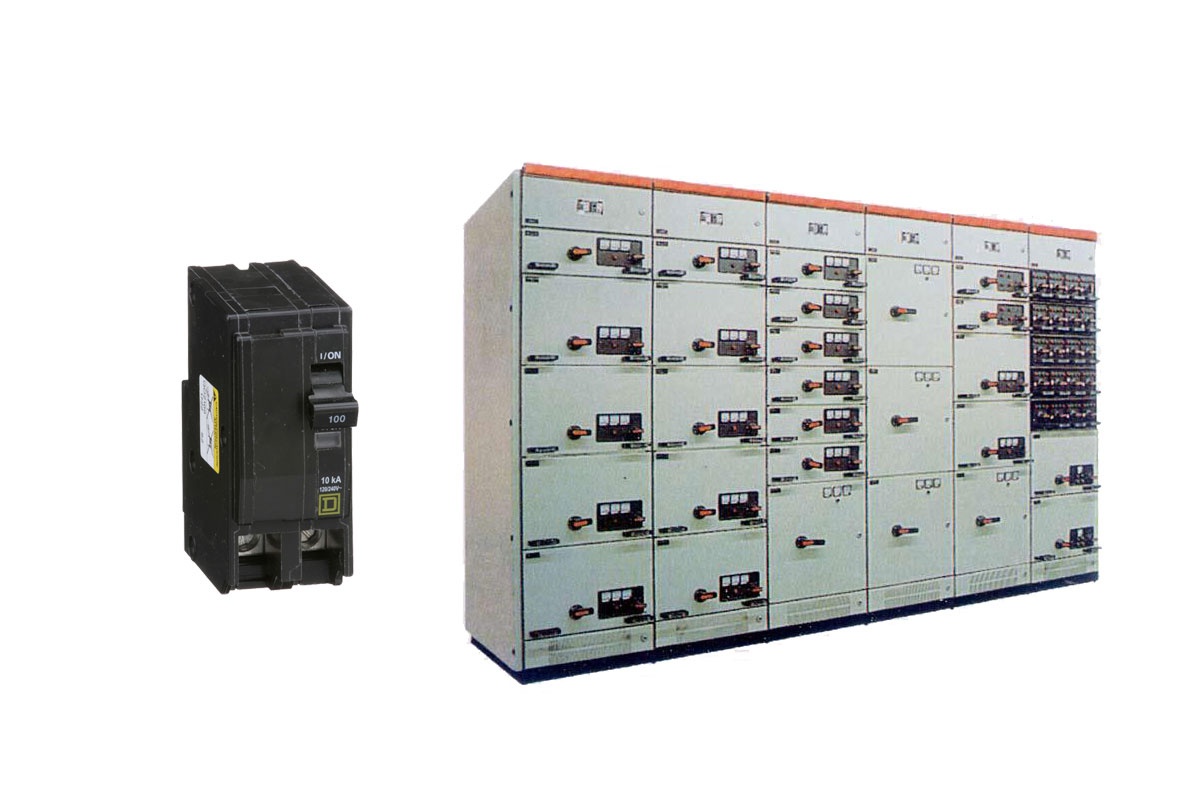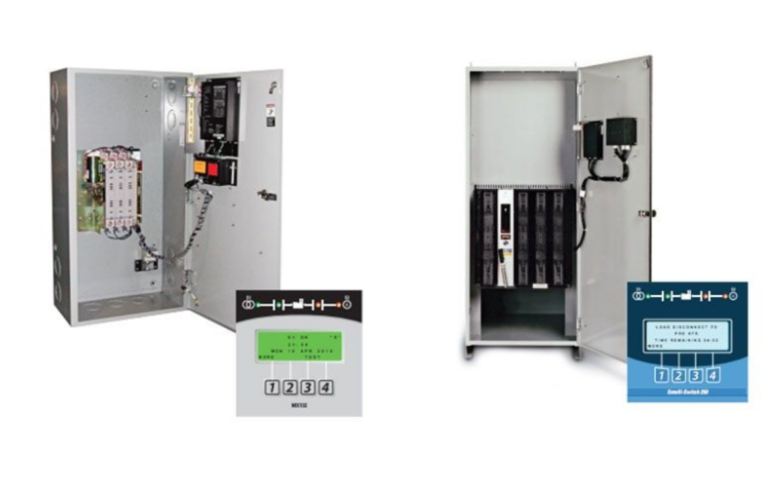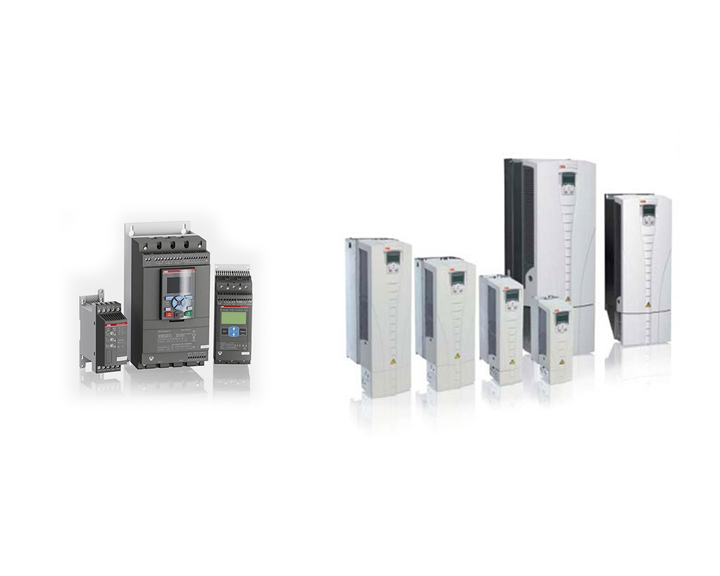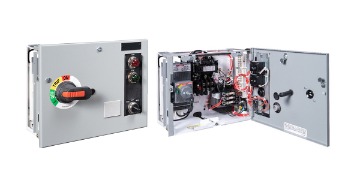Circuit breaker vs. Switchgear
Circuit breakers and switchgear are common terms for anyone with electrical experience. But for those who aren’t experts in the electrical field, the two words may seem similar, even interchangeable.
However, despite the similarities, the two have fundamental differences. This article will discuss the differences between circuit breakers and switchgear—two critical elements of an electrical circuit.
What is a Circuit Breaker?
Circuit breakers are an essential component in an electrical system. They are electrical switches designed to protect an electrical circuit from damage due to a short circuit or overcurrent/overload.
The switch monitors the electrical current flowing through the circuit and automatically interrupts the flow in case of a short or overload. These devices are a vital part of electrical systems in various scenarios, from residential to commercial and industrial.
Types Of Circuit Breakers
There are three main circuit breakers: standard, GFCI, and AFCI. Specific models boast dual functionality, but each type handles different amp capacities and functions in other locations.
Standard circuit breakers monitor the amp capacity of the devices they operate. If necessary, the breaker will interrupt the circuit to prevent elements from overheating, which reduces the risk of an electrical fire. These circuit breakers can be single-pole or double-pole.
Ground fault circuit interrupter (GFCI) circuit breakers function differently than standard circuit breakers. Instead of interrupting the circuit, GFCI breakers cut power to the entire circuit. As a result, an overload of current, a short circuit, or a line-to-ground fault can trip the breaker.
Arc fault circuit interrupter (AFCI) circuit breakers are designed to protect against an unintentional discharge in wiring or an electrical cord that could cause a fire. When the breaker senses the electrical jump and abnormality, it instantly disconnects the damaged circuit, cutting power before the arc generates enough heat to start a fire.
Aside from the three major classes, there are a few different types of circuit breakers. These include:
- Standard circuit breakers: This type of circuit breaker is commonly used in electrical panels in businesses and homes that utilize and operate on 120V/240V single-phase electrical power. They come in single-pole or double-pole breakers, with the latter used for higher voltage scenarios.
- Magnetic circuit breakers: These breakers employ a solenoid or an electromagnet inside the device. This creates a magnetic field with a strength that varies linearly with the current magnitude within the circuit.
- Thermal circuit breakers: This type of circuit breaker uses a bimetallic strip inside the breaker that the circuit current flows through.
- Thermal magnetic circuit breakers: These breakers combine the sensing and tripping mechanisms in a single device, one based on heat, the other on magnetic. This provides circuit protection for the device.
- Hydraulic magnetic circuit breakers: This type of circuit breaker offers a more precise method of tailoring the circuit protection needs for a specific application. They utilize a solenoid wrapped around a tube containing an iron core, a spring, and a dampening fluid.
- Automotive circuit breakers: Three classes subdivide automotive circuit breakers: Types 1, 2, and 3. The reset mechanism determines the type.
- Molded case circuit breakers: These are used in almost any environment and are designed to protect against short circuits, ground faults, and thermal overloads using thermomagnetic and electromagnetic mechanisms.
- Air breakers: Air breakers provide overcurrent protection and short-circuit protection for circuits over 800 amps to 10K Amps. They’re typically used in situations with a high probability of fire or explosion hazards.
- Vacuum Breakers: These breakers are often used in high voltage systems to cut off power to electrical outlets in case of a short circuit or electrical malfunction. A defining feature of vacuum breakers is that they contain evacuated spaces.
How Do Circuit Breakers Work?
Each type of circuit breaker operates somewhat differently from the next. However, they share the same general goal of preventing damage to a circuit. Circuit breakers will interrupt or cut off electricity flow when it surpasses a predetermined amount to achieve that goal.
Each circuit breaker has a specific rating, and the rating of the circuit breaker indicates the predetermined amount of electricity it will allow. The rating is based on the amount of current the circuit breaker can safely carry and the specific amount it can safely interrupt.
Consider the internal components for a more specific definition of how circuit breakers work. Inside each breaker, there’s a spring hooked over a small piece of solder, which is a melt-able fusible alloy. Every breaker connects to an electrical wire that runs through your house. The electric current flowing through your home runs through the solder. If the wiring is at risk of overheating, the solder melts.
This causes the spring to extend through the solder, pulling the switch off and shutting down the specific circuit. Once the alloy cools down, you can reset the circuit breaker. This process is similar to how a fuse works, but the alloy is the bridge instead of a spring. So, when it overheats, the alloy melts and permanently opens. Of course, you must replace fuses each time they overheat, but you can simply switch circuit breakers back into the “on” position.
Circuit Breaker Applications
Circuit breakers are found in various applications to protect the electrical system. The typical applications include:
- Industries
- Buildings
- Commercial complexes
- Hotels
Air circuit breakers are used for the protection of:
- Plants
- Electrical machines
- Transformers
- Capacitors
- Generators
Airblast circuit breakers are used in Indian Railways, specifically for electrification.
Advantages And Disadvantages Of Circuit Breakers
Circuit breakers offer various advantages and disadvantages. A few of the benefits include:
- Protection from damage as a result of excessive current flow
- Reliability
- Can be reset because it operates via a switch
- Sensitivity
On the other hand, a few of the disadvantages of circuit breakers include:
- Installation and repair are costly compared to fuses
- Fuses react quicker than circuit breakers
What is a Switchgear?
The term “switchgear” encompasses a broad spectrum of switching devices, including electrical disconnect switches, fuses, or circuit breakers, all with a common goal—to control, protect, and isolate power systems.
Switchgears feature a design that intends to defend equipment connected to a power supply from the threat of electrical overload. In addition, they can de-energize equipment to allow work to be done safely and clear faults downstream.
Types Of Switchgear
There are three primary classes of switchgear: low-voltage, medium-voltage, and high-voltage. For most applications, low-voltage switchgear or medium-voltage switchgear is sufficient.
Low-voltage switchgear features a specific design that regulates up to 1 kV systems. Usually, low-voltage switchgear is found on the low-voltage end of power distribution transformers.
Medium-voltage switchgear is utilized in systems over 1 kV and up to 75 kV. Due to its capacity capabilities, medium-voltage switchgear is usually found in systems involving feeder circuits, motors, and transmission and distribution lines.
High-voltage switchgear controls the next bracket up to 75 kV of power or more. Since these devices are designed for high-voltage usage, they typically feature additional safety features.
How Does A Switchgear Work?
Although each type of switchgear follows somewhat different operational processes, the basic concepts remain the same: when an electrical fault occurs, the relay closes the trip circuit, disconnecting downstream loads. This enables the remainder of the circuit to continue operating normally, without disruption, while simultaneously protecting vital equipment from damage.
Switchgear Applications
Like circuit breakers, switchgear is used in various applications. A few of the standard applications include:
- Power stations
- Industrial power distribution
- Residential power distribution
- Solar power generation
Advantages And Disadvantages Of Switchgear
Switchgear has various advantages and several limitations. Its advantages include:
- Reliable and secure
- Easy for maintenance and durable
- Lower operating costs
- Those with grounded metal enclosures have decreased risks of electrocution.
The primary limitations of switchgear fall to installation costs and economic issues (indoor high voltage systems).
How Circuit Breaker and Switchgears Differ
Circuit breakers and switchgear share multiple similarities, which can cause confusion between the two. However, a few differences create a clear separation.
Components
First, one of the primary differences between circuit breakers and switchgear is the components. While circuit breakers are a single device consisting of an external casing, electrical contacts, electrical arc extinguishing mechanisms, main operating mechanisms, and trip elements, switchgear contains numerous devices.
Switchgear can consist of various switching and protecting devices. These devices can include:
- Switches
- Fuses
- Isolators
- Circuit breakers
- Protective relays
- Control panels
- Lightning arrestors
- Current transformers
- Potential transformers
- Auto reclosures
- Associated equipment
Depending on the particular type of switchgear, the system can include different components in the list. So, while switchgear involves a complex cocktail of switching and protecting devices working together, circuit breakers are solely circuit breakers.
Function
Second, circuit breakers and switchgear have different functions. Circuit breakers are automatically operated electrical switches that protect the circuit from damage caused by an overload or short circuit.
The essential function of a circuit breaker is to operate immediately following the detection of a fault condition by the relay. It interrupts continuity, discontinuing the electrical flow to protect the circuit.
On the other hand, switchgear features a few additional functions. Although switchgear is also designed to protect electrical equipment, they’re capable of controlling and isolating the equipment. Switchgear can de-energize equipment but also clear faults downstream.
Despite the utmost importance of circuit breakers in the grand scheme of electrical systems, switchgear is what directly correlates with the reliability of the electric supply.
Frequency of Operation
Another critical difference between circuit breakers and switchgear is the frequency of operation. While switchgear is designed for regular operation, circuit breakers are not. Given the function of a circuit breaker, the lesser operation time makes sense: it operates immediately after it detects a fault.
Consider the circuit breakers in your home. Although circuit breakers constantly monitor the electric current flowing through each circuit, they shouldn’t trip regularly. Frequently resetting the circuit breaker can indicate a myriad of problems, ranging from an overloaded circuit to an old, failing circuit breaker.
Conclusion
With a basic understanding of circuit breakers, switchgear, and the individual function of each, the differences become clear. Although the two terms are similar in some aspects, the function, composition, and other differences create a clear divide between the two.




